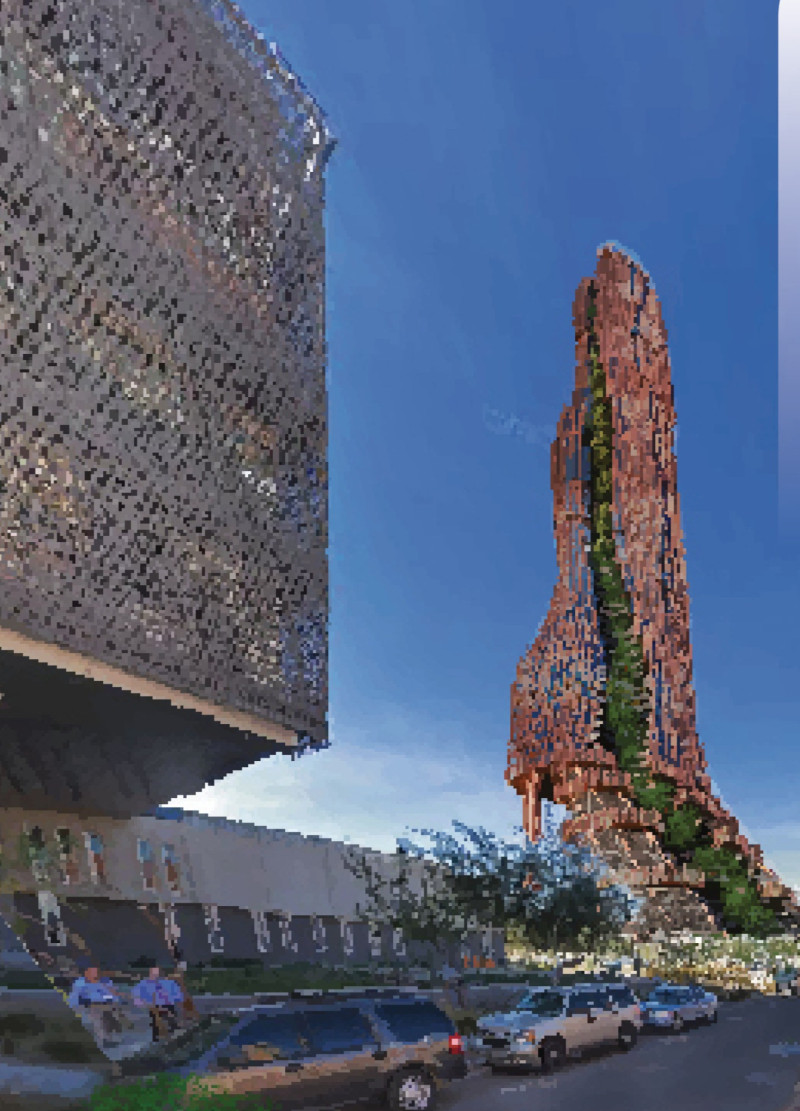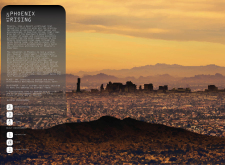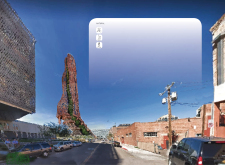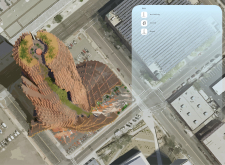5 key facts about this project
The project in Phoenix addresses the issues of urban sprawl and lack of identity through a careful blend of high-rise structures and the surrounding landscape. Located in a desert environment, the design concept aims to create a sense of place while meeting the needs of the community. The core idea revolves around the concept of a "Placescraper," which combines skyscraper characteristics with a focus on local context to enrich the urban experience.
Conceptual Framework
The design emphasizes the integration of buildings with their environment. High rises made of glass and concrete rise from the desert floor, forming a visual connection that reflects the identity of Phoenix. This approach highlights a need for architecture that functions economically while also resonating with the natural landscape. It seeks to create a harmonious relationship between urban life and the setting in which it exists.
Architectural Elements
Using glass and concrete is central to the execution of the design. Glass offers transparency, allowing those inside to connect with the outdoors, while enhancing the bond between interior and exterior. Concrete provides essential structural support, ensuring stability in the demanding desert climate, serving as a means of durability in the design.
Community and Connectivity
Promoting accessibility and interaction is a key aspect of the design. Spaces for the community are integrated within the framework of the high rises, making it welcoming for residents and visitors. The architecture encourages movement and engagement, allowing a sense of belonging to flourish among users.
Natural Integration
One notable feature is how the design aligns with the geography of Phoenix. The high rises are strategically placed to frame views of the nearby mountains, enhancing the experience of the landscape from various vantage points. This thoughtful arrangement emphasizes a connection between the buildings and their setting, turning the project into more than simple structures, but rather a representation of the distinctive character of the desert environment.






















































